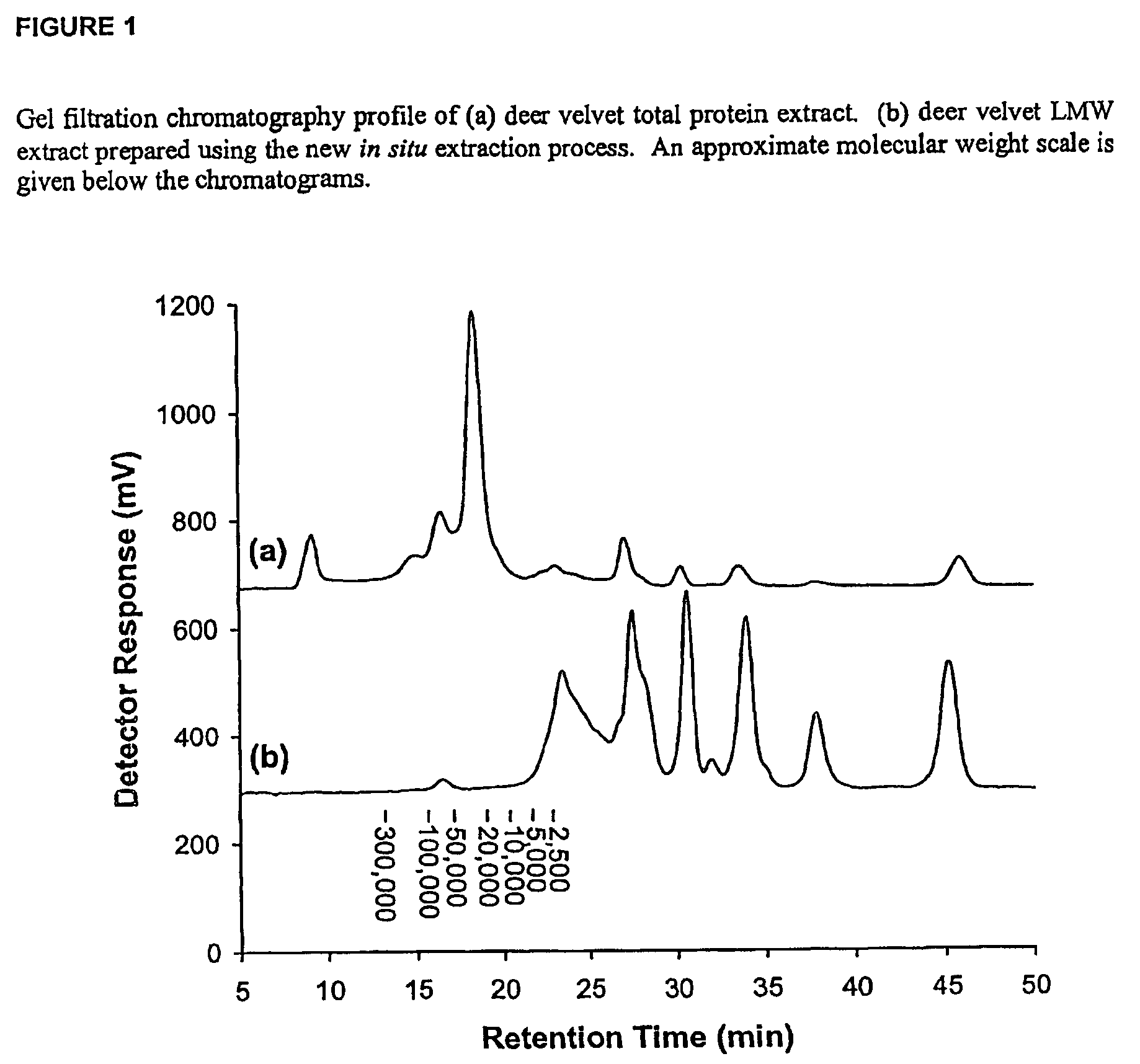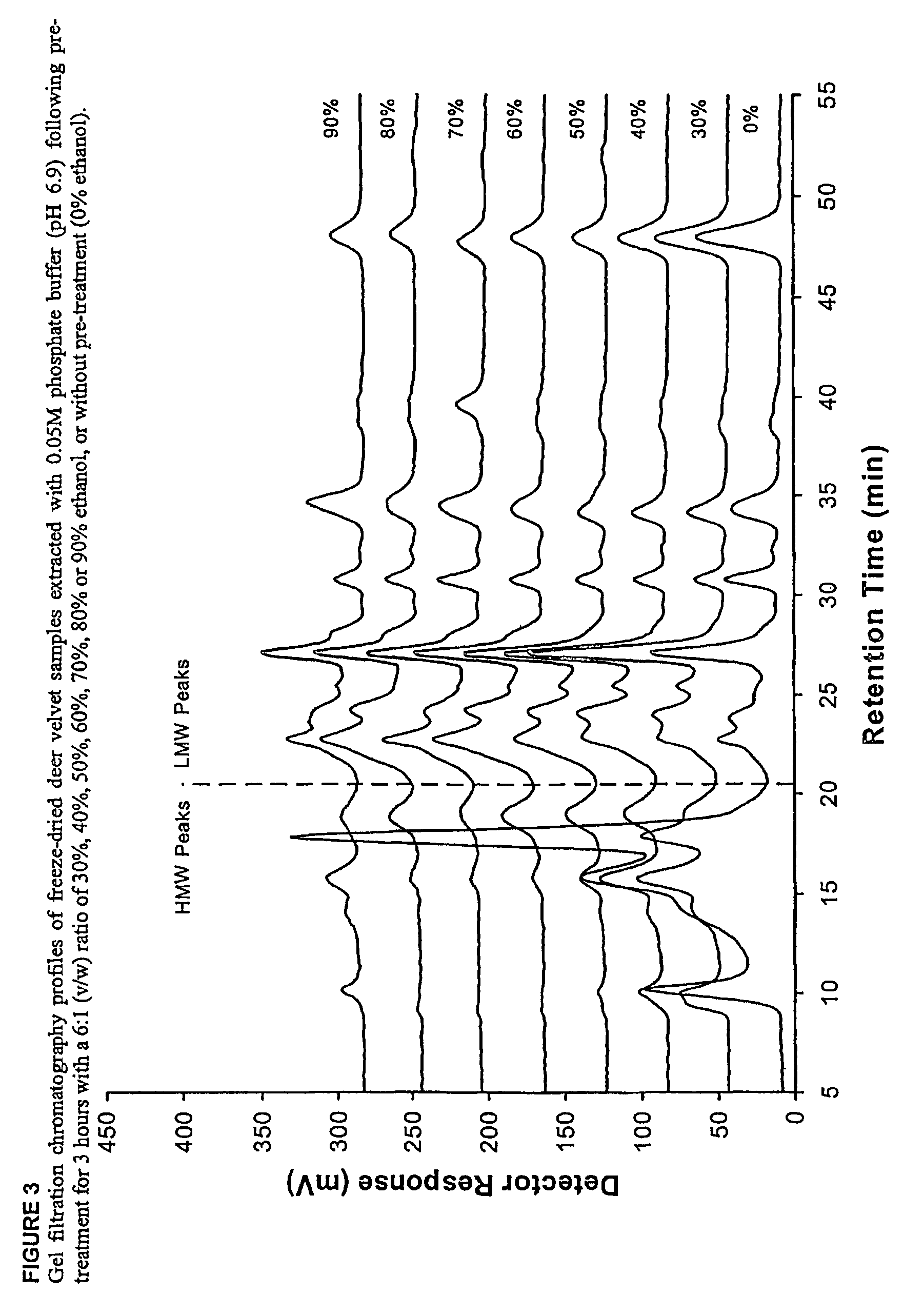Low molecular weight extraction process
a low molecular weight, extraction process technology, applied in the direction of peptide preparation methods, growth factors/regulators, animal/human proteins, etc., can solve the problems of low molecular weight fraction dilution, and high capital investment, so as to reduce the microbiological loading of the slurry and reduce the yield of lmw peptides.
- Summary
- Abstract
- Description
- Claims
- Application Information
AI Technical Summary
Benefits of technology
Problems solved by technology
Method used
Image
Examples
Embodiment Construction
Best Modes for Carrying Out the Invention
Experimental
LMW in situ Extraction Process—Heat Dried and Freeze-Dried Deer Velvet
[0091]Ground deer velvet powder (5.00 g) derived from the mid-portion of a traditionally (heat) dried antler was weighed into a 500 Ml Buchi evaporating flask. Sufficient 70% ethanol (˜30 Ml) was added to create a mobile slurry and the mixture was stirred at ambient temperature (20° C.) on a magnetic stirrer for one hour. The solvent was then removed by rotary evaporation using a Buchi Rotavapor with a 30° C. water bath. Traces of residual solvent were removed under high vacuum by use of an oil pump (Edwards) for one hour. De-ionised water (100 Ml) was added to the dried residue and the mixture was stirred at ambient temperature (20° C.) on a magnetic stirrer for three hours. Following filtration through glass fibre filter paper (Whatman GF / A) the filtrate was centrifuged at 14,600 g for 30 Minutes at 4° C. The supernatant was decanted into a glass bottle and th...
PUM
| Property | Measurement | Unit |
|---|---|---|
| molecular weight | aaaaa | aaaaa |
| temperature | aaaaa | aaaaa |
| molecular weight | aaaaa | aaaaa |
Abstract
Description
Claims
Application Information
 Login to View More
Login to View More - R&D
- Intellectual Property
- Life Sciences
- Materials
- Tech Scout
- Unparalleled Data Quality
- Higher Quality Content
- 60% Fewer Hallucinations
Browse by: Latest US Patents, China's latest patents, Technical Efficacy Thesaurus, Application Domain, Technology Topic, Popular Technical Reports.
© 2025 PatSnap. All rights reserved.Legal|Privacy policy|Modern Slavery Act Transparency Statement|Sitemap|About US| Contact US: help@patsnap.com



